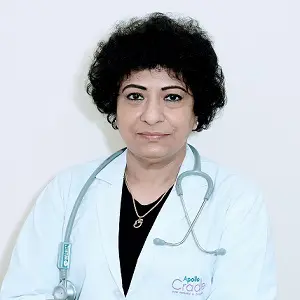A hysterectomy is a surgical procedure used for the removal of the uterus. It may involve the removal of ovaries and fallopian tubes as well based on the cause of surgery.
Many women with fibroids, bleeding problems, and cancer undergo a hysterectomy. It's more common for women aged 40 to 50 to get one. After a hysterectomy, women will not get their periods or get pregnant anymore.
What is a hysterectomy?
Surgeons can perform a hysterectomy in three different ways:
Vaginal hysterectomy: Removal of the uterus through the vagina does not involve any cuts, and no scar is visible.
Abdominal hysterectomy: A surgeon makes 6-8 incisions on your abdomen to remove the uterus. This procedure is performed when there is cancer involved, if the uterus is enlarged, or if the disease has spread to the pelvic region.
Laparoscopic hysterectomy: The surgery uses a laparoscope, a tube with a camera, to see the pelvis through a small incision made in your navel, and to insert other tools several cuts are made in your belly button. Laparoscopic hysterectomy is of two types:
- Laparoscopic-assisted vaginal hysterectomy
- Robot-assisted laparoscopic hysterectomy
Who qualifies for the procedure?
Hysterectomies are performed to treat problems related to the female reproductive system. These include:
- Heavy periods
- Prolonged pain in the pelvis
- Fibroids
- Ovarian cancer, uterine cancer, cervical cancer, or cancer of the fallopian tubes
Why is a hysterectomy conducted?
Women may need a hysterectomy to cure:
Gynaecologic cancer
If you have uterine cancer or cancer of the cervix, getting a hysterectomy may be best for you.
Fibroids
For women with fibroids (benign tumors) that cause continuous bleeding and severe pelvic pain, hysterectomy is the only solution.
Endometriosis
When the inner tissue lining of the uterus grows outside of it into fallopian tubes, ovaries, and other abdominal organs, it gives rise to a condition called endometriosis. If medication or a conservative surgery does not help with the condition then a hysterectomy can be performed to remove the ovaries and fallopian tubes.
Uterine prolapse
When the tissues and ligaments of your uterus become weak then causes descent of the uterus. Uterine prolapse has symptoms like urinary incontinence, back pain, difficulty during intercourse, and pelvic pressure, and due to prolapse uterus often occurs as childbirth. A hysterectomy is needed to treat these.
Abnormal vaginal bleeding
If you are having heavy and irregular periods in each cycle for a prolonged time, a hysterectomy may be beneficial when other methods are not working to control bleeding.
Pelvic inflammatory disease (PID)
It is a bacterial infection of the female reproductive system. The infection can be treated with the help of antibiotics if detected early. It may injure the fallopian tubes and uterus if the infection spreads with severe pain. If a woman experiences pain due to PID and does not wish to have children, a hysterectomy may be recommended.
Different types of Hysterectomy
There are various types of hysterectomy. The type depends on the need for the surgery.
The different types are:
Total hysterectomy: This is the most common type of hysterectomy performed where the uterus and cervix are removed.
Subtotal hysterectomy: The main body of the uterus is removed, leaving the cervix.
Total hysterectomy with bilateral salpingo-oophorectomy: In this type of hysterectomy your uterus, ovaries, cervix, and fallopian tubes are removed.
Radical hysterectomy: The whole uterus is removed, and tissues are on the side of the uterus, the cervix, and part of the vagina. Radical hysterectomy is mostly performed when there is cancer.
How does hysterectomy help women?
- It stops abnormal heavy bleeding
- Relief from chronic pain
- Pain-free sex
- Prevents cancer
- Removal of cancerous tissues
- Quality of life is improved
What are the benefits of this surgery?
- Less invasive compared to open surgery
- Less scar
- Incision is smaller
- Less blood loss
- Shorter hospital stays
- Recovery time is faster
What are the risks of a hysterectomy?
There are no complications among women who get a hysterectomy. Since a hysterectomy is a major surgery, there are some risks involved:
- Prolapse of vagina
- Formation of vaginal fistula
- Urinary incontinence
- Chronic pain
Other risks include infections, haemorrhaging, and blood clots.
Request an appointment at Apollo Cradle, Amritsar - Abadi Court Road. Call 1860-500-4424 to book an appointment.
There might be some changes in the pelvic region, but your sexual activity is not affected. Removal of ovaries from the uterus, however, may cause symptoms of menopause to develop, resulting in a low sex drive.
The recovery time may take longer. It comes with side effects like menopause.
It takes a patient more than two months to recover completely after an abdominal hysterectomy. Whereas vaginal and laparoscopic hysterectomies take lesser recovery time. Patients need proper rest after the surgery and must avoid lifting heavy things.

 93% Patient Satisfaction Score
93% Patient Satisfaction Score





